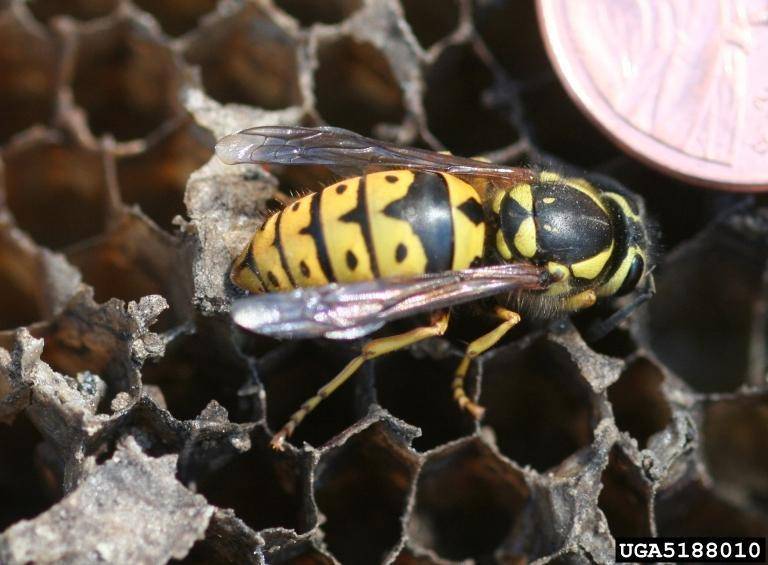By Zach Schumm
All wasps can sting, right? Well, not exactly. While we tend to group them all into the stinging insect category, paper wasps, yellowjackets and aerial yellowjackets (hornets) do most of the stinging. These wasps are in a single-insect family (Vespidae) with ovipositors or egg-laying organs modified into stingers.
Of all the species of wasps, over 99% of them do not have an actual stinger. Most of them are beneficial parasites of other plant-damaging insects such as grasshoppers and caterpillars, and they help keep those populations in check. So, think twice before acting against wasps. They are more beneficial than we give them credit for! Consider this information.
- Wasps can become territorial if they feel their nests are threatened or when the availability of food is low, but most of them are not aggressive. Simply avoiding the nest area can prevent most stings. When wasps are out and about, they are usually searching for food and do not care if humans are near. If you stand still around wasps, they will usually fly away on their own, even if they come within inches of you. They generally want nothing to do with humans. Never swing or strike at them since quick movements can provoke defensive stings.
- There are no true hornets in Utah. The insects we refer to as hornets are actually aerial yellowjackets that make above-ground nests; other yellowjackets nest in the ground. Paper wasps make nests on structures and trees above ground. They generally build nests on the eaves of homes or other protected areas around the yard, including playground equipment, fences, sheds, etc.
- Paper wasps, yellow jackets and aerial yellowjackets are social wasps that nest with other individuals. They can sting with their ovipositors, and their group causes the majority of stings to humans in North America. Stings from social wasps are not usually medically significant, other than temporary pain and swelling around the sting area. However, those who are allergic to them can experience severe reactions requiring immediate medical attention.
- Since yellowjackets (ground-nesting and aerial-nesting) are often attracted to sugary foods, soda cans and garbage containers, be sure to frequently remove waste and maintain tight lids on all trash receptacles.
- Management is only necessary when social wasps nest in heavy-traffic areas or if household members could be allergic to stings. Generally speaking, nests in the landscape or low-traffic areas should be considered beneficial because of their predatory tendencies.
- If management becomes necessary, many chemicals are available that can reduce wasp populations at the nesting site. Selection depends on the location and size of the nest. Be sure to follow label directions.
- Traps can reduce wasp populations around garbage cans. However, the pheromones are generally made for ground-nesting yellowjackets and will not attract aerial yellowjackets or paper wasps unless specifically labeled.
For further information on social wasps, visit https://digitalcommons.usu.edu/cgi/viewcontent.cgi?article=1992&context=extension_curall.

